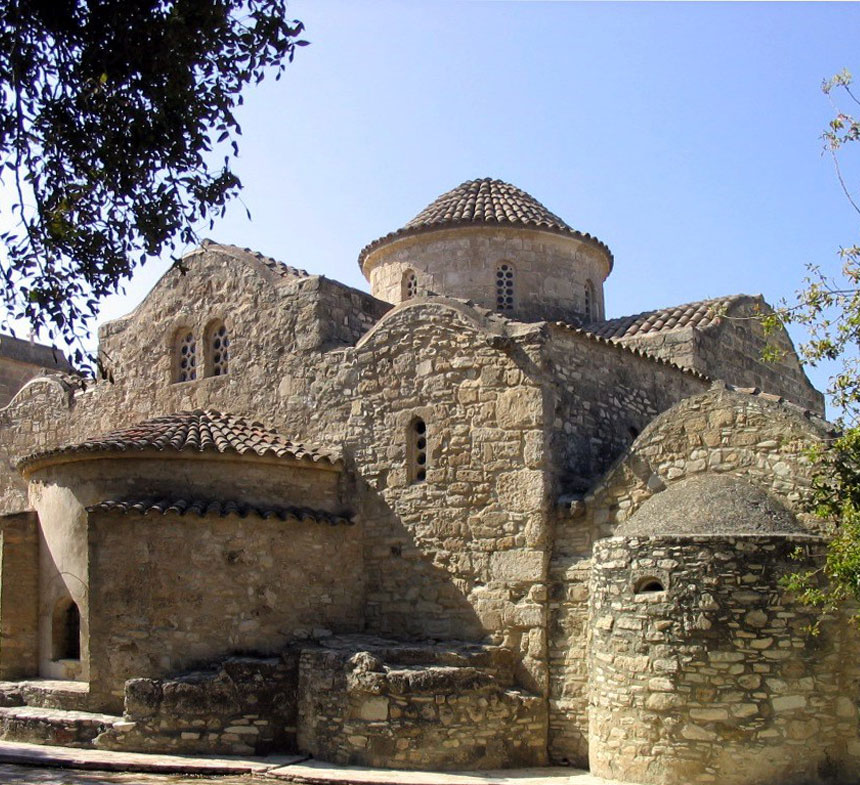Panagia tis Angeloktistis (Greek: Παναγία της Αγγελόκτιστης) or Panagia Angeloktisti (Παναγία Αγγελόκτιστη, "Panagia Built by Angels") is a Byzantine church located in the village of Kiti, Cyprus, roughly 12 kilometers to the southwest of modern-day Larnaka and the ancient city Kition.
The Church of Panagia Aggeloktisti was submitted as a possible UNESCO World Heritage Site in September 2015 and is currently listed on the list of Tentative UNESCO World Heritage Site.
The mosaic of Panagia tis Angeloktisti is one of the best preserved early Christian wall mosaics of Cyprus and was likely created in the late 6th century. The period of Justin II saw the expanded production of wall and floor mosaics, and Cyprus was no exception. In Kiti, the Virgin Mary holds in her left arm the Christ Child, in the Hodegetria style, and stands on stool in a manner that makes her appear almost as if she were standing in mid-air. On the Virgin’s right is the archangel Michael and on her left is the archangel Gabriel, and all are situated against a golden background. Both angels’ wings appear to be made from peacock feathers, which is a symbol of eternal life. The angels appear to hold a scepter and offer a globe with a cross at the apex, which symbolizes the offering of earthly domination to Christ and the Virgin. Megaw notes that these features are repeated in the mosaic at Saint Catherine’s Monastery in the Sinai and help corroborate the sixth century dating of the mosaic.
Megaw notes precision and delicacy used to construct the faces in Kiti “is markedly different from the impressionistic manner used at Lythrankomi,” but is echoed in the technique used on the faces of San Vitale at Ravenna. Above the Virgin Mary is the phrase “HAGIA MARIA,” thereby naming her as Holy Mary or St. Mary instead of “ Theotokos ” (Mother of God). After the Council of Nicaea of 431 CE bestowed upon the Virgin Mary the title of St. Mary the name became increasingly commonly used instead of Theotokos.
The mosaic is completed with a border depicting the Fountain of Life with pairs of ducks, beribboned parrots (a Persian symbol of terrestrial power), and deer or stags (a reference to the 41st and/or 42nd Psalm) are shown drinking from the fountains. Megaw notes that similar Fountain of Life imagery was also used in the ambo of Bishop Agnellus in Ravenna; other historians have drawn parallels to this Byzantine imagery in Salona, Zadar in Croatia, Stobi, Amphipolis in Macedonia, Greece (e.g. Basilica), and Edessa in Macedonia.[3] Mullet suggests that beginning in 5th century Christian basilicas there was “a general development whereby the natural world is brought into the House of the Lord” and that this style especially thrived in the 6th century.
Source: wikipedia.org

Feel free to contact us for more informations.
Contact Us Now